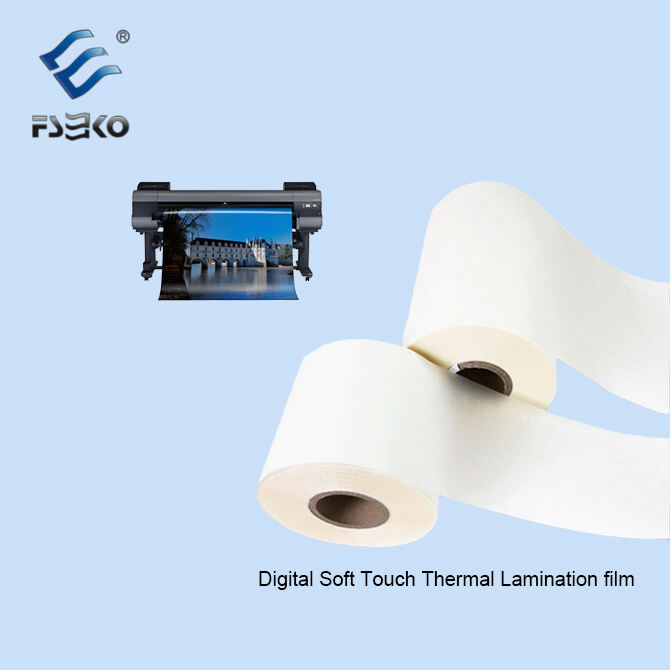In the era of digital transformation, the demand for durable and high-performance printing materials has surged across industries. From luxury packaging to flexible electronics, businesses seek solutions that protect printed surfaces from scratches, abrasions, and environmental wear while maintaining visual clarity. This brings us to a critical question: Does digital scratch proof film truly deliver on its promises? Let’s explore its technology, applications, and effectiveness through the lens of innovation and real-world performance.
Understanding Digital Scratch Proof Film: The Science Behind Durability
Digital scratch proof film is a specialized type of thermal lamination film designed to shield printed materials from physical damage. Unlike standard laminates, it incorporates advanced polymer coatings or hardened surface layers that resist scratches, fingerprints, and chemical exposure. These films are engineered to balance flexibility and toughness, making them suitable for both rigid and curved substrates.
Key Components of Scratch Resistance:
- Hard Coatings: Some films feature a transparent, ultra-hard top layer (often silicon-based or acrylic) that acts as a barrier against abrasions.
- Cross-Linked Polymers: The molecular structure of the film can be modified to enhance bonding strength, reducing vulnerability to cracks or peeling.
- UV Stabilization: For outdoor applications, scratch-resistant films may include UV inhibitors to prevent yellowing or degradation under sunlight.
Industry leaders like Guangdong EKO Film Manufacture Co., Ltd. leverage decades of R&D to optimize these properties. Their digital thermal lamination films, for instance, integrate nano-scale additives to improve scratch resistance without compromising print vibrancy or recyclability—a critical consideration in today’s eco-conscious market.
Applications Across Industries: Where Does It Excel?
The versatility of digital scratch proof film makes it indispensable in sectors where surface protection is non-negotiable:
- Luxury Packaging: High-end brands rely on scratch-resistant films to maintain the pristine appearance of cosmetics, jewelry, and premium goods during shipping and display.
- Electronics: Touchscreens, device casings, and control panels benefit from films that resist scratches from daily use while supporting capacitive touch functionality.
- Outdoor Signage: Digital prints exposed to weather elements, such as billboards or vehicle wraps, require films that combine scratch resistance with UV durability.
- Flexible Packaging: For food and pharmaceutical products, non-plastic, scratch-proof alternatives are gaining traction as brands prioritize sustainability and product safety.
EKO’s product portfolio exemplifies this adaptability. Their DTF (Direct-to-Film) thermal lamination films and non-plastic thermal lamination solutions cater to diverse needs, from digital printing to eco-friendly packaging, ensuring compatibility with various substrates and printing technologies.
Does It Really Work? Evaluating Performance Metrics
The effectiveness of scratch proof film hinges on three factors: material composition, application process, and end-use conditions.
- Lab Testing: Manufacturers subject films to rigorous tests, such as the Taber Abrasion Test (which measures wear resistance) or pencil hardness ratings (e.g., 3H–6H for scratch resistance).
- Real-World Feedback: Customers in electronics and automotive sectors report that high-quality films reduce replacement costs by extending the lifespan of printed components. For example, a smartphone manufacturer using EKO’s digital hot sleeking foil noted a 40% drop in screen protector returns due to scratches.
- Sustainability Edge: Modern scratch-proof films, including EKO’s recyclable composites, address plastic reduction goals without sacrificing performance—a win for brands targeting environmentally conscious consumers.
Choosing the Right Film: Key Considerations
Not all scratch-resistant films are created equal. When selecting a supplier, prioritize:
- Certifications: Look for ISO standards or eco-labels (e.g., RoHS, REACH) to ensure compliance with global regulations.
- Customization: Can the manufacturer tailor films to your specific needs, such as matte/gloss finishes or anti-glare properties?
- Technical Support: Partners like EKO offer R&D collaboration and post-sales assistance to troubleshoot application challenges.
The Future of Scratch-Resistant Materials
As industries demand smarter, greener solutions, the evolution of digital scratch proof film continues. Innovations like self-healing coatings (which repair minor scratches via heat or light) and biodegradable hard layers are on the horizon. Companies that invest in R&D—such as EKO, with its portfolio of domestic and international patents—will lead this transformation, driving both performance and sustainability.
Conclusion
Digital scratch proof film is not a marketing gimmick; it’s a proven technology backed by material science and real-world validation. For businesses seeking to protect their brand’s visual integrity, reduce waste, and meet consumer expectations, investing in high-quality films is a strategic imperative. By partnering with innovators like Guangdong EKO Film Manufacture Co., Ltd., you gain access to cutting-edge materials that redefine durability in the digital age.
Ready to explore scratch-resistant solutions tailored to your industry? The journey to superior surface protection starts with understanding your unique challenges—and the science that solves them.


